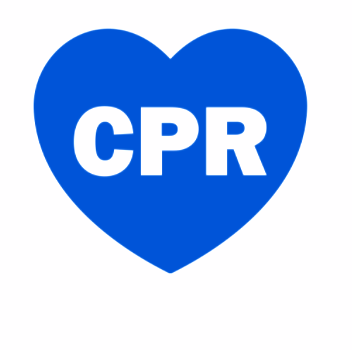No or Slow Heart Rate Following Ventilations
 Once the airways have been sufficiently opened (A) and effective lung inflation and ventilation has been completed (B) then most newborns have been given opportunity to undergo transition.
Once the airways have been sufficiently opened (A) and effective lung inflation and ventilation has been completed (B) then most newborns have been given opportunity to undergo transition.
In a very small percentage of newborns (approx 0.1%) of term babies require anything further such as chest compressions.
If the heart rate remains undetectable / very slow (under 60 per minute) then circulation will likely be at a standstill, with a very low blood pressure, bradycardia / Pulseless Electrical Activity demonstrated on the ECG and continued poor skin colour.
Having confirmed that all attempts to inflate the lungs and ventilate the newborn have been optimal – then should chest compressions follow.
Single responder CPR: This may be required in the case of a single responder and one hand is required to maintain the airway.
- One hand supports the airway and the resuscitation bag
- 2 fingers of the second hand presses the sternum when the baby is on a supportive surface – compressing the sternum by 1/3 of the depth of the chest at a ratio of 3 compressions to 1 ventilation
2-person CPR:
- Encircling both hands around the chest wall and overlapping the thumbs where possible to provide better intrathoracic pressure compress the sternum by 1/3 of the depth of the chest at a ration of 3 compressions to 1 ventilation.
Both compression and recoil are important to allow for the chest to fully expand and refill.
Synchronised compressions and ventilations in a ratio of 3:1 to achieve a rate of 120 / minute.
Prolonged resuscitation (longer than 1-2 minutes) may lead to operator fatigue, therefore switching operator positions may help to produce effective CPR.
Single-Responder CPR
Two-Thumb, Two-handed CPR
If an i-Gel is in place or the newborn has been intubated during this process, then intermittent compressions and ventilations are continued using the same 3:1 rate.

